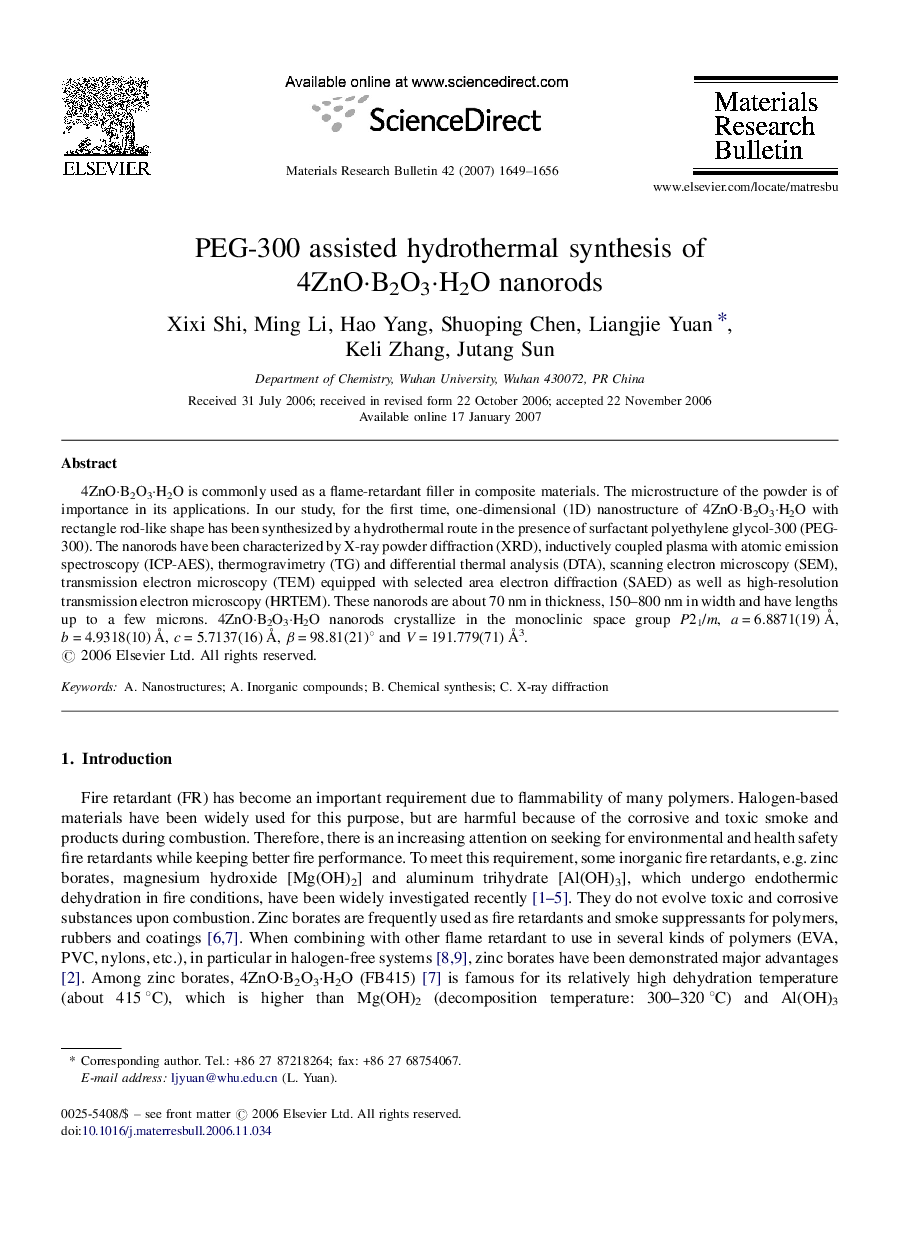| Article ID | Journal | Published Year | Pages | File Type |
|---|---|---|---|---|
| 1492038 | Materials Research Bulletin | 2007 | 8 Pages |
4ZnO·B2O3·H2O is commonly used as a flame-retardant filler in composite materials. The microstructure of the powder is of importance in its applications. In our study, for the first time, one-dimensional (1D) nanostructure of 4ZnO·B2O3·H2O with rectangle rod-like shape has been synthesized by a hydrothermal route in the presence of surfactant polyethylene glycol-300 (PEG-300). The nanorods have been characterized by X-ray powder diffraction (XRD), inductively coupled plasma with atomic emission spectroscopy (ICP-AES), thermogravimetry (TG) and differential thermal analysis (DTA), scanning electron microscopy (SEM), transmission electron microscopy (TEM) equipped with selected area electron diffraction (SAED) as well as high-resolution transmission electron microscopy (HRTEM). These nanorods are about 70 nm in thickness, 150–800 nm in width and have lengths up to a few microns. 4ZnO·B2O3·H2O nanorods crystallize in the monoclinic space group P21/m, a = 6.8871(19) Å, b = 4.9318(10) Å, c = 5.7137(16) Å, β = 98.81(21)° and V = 191.779(71) Å3.
